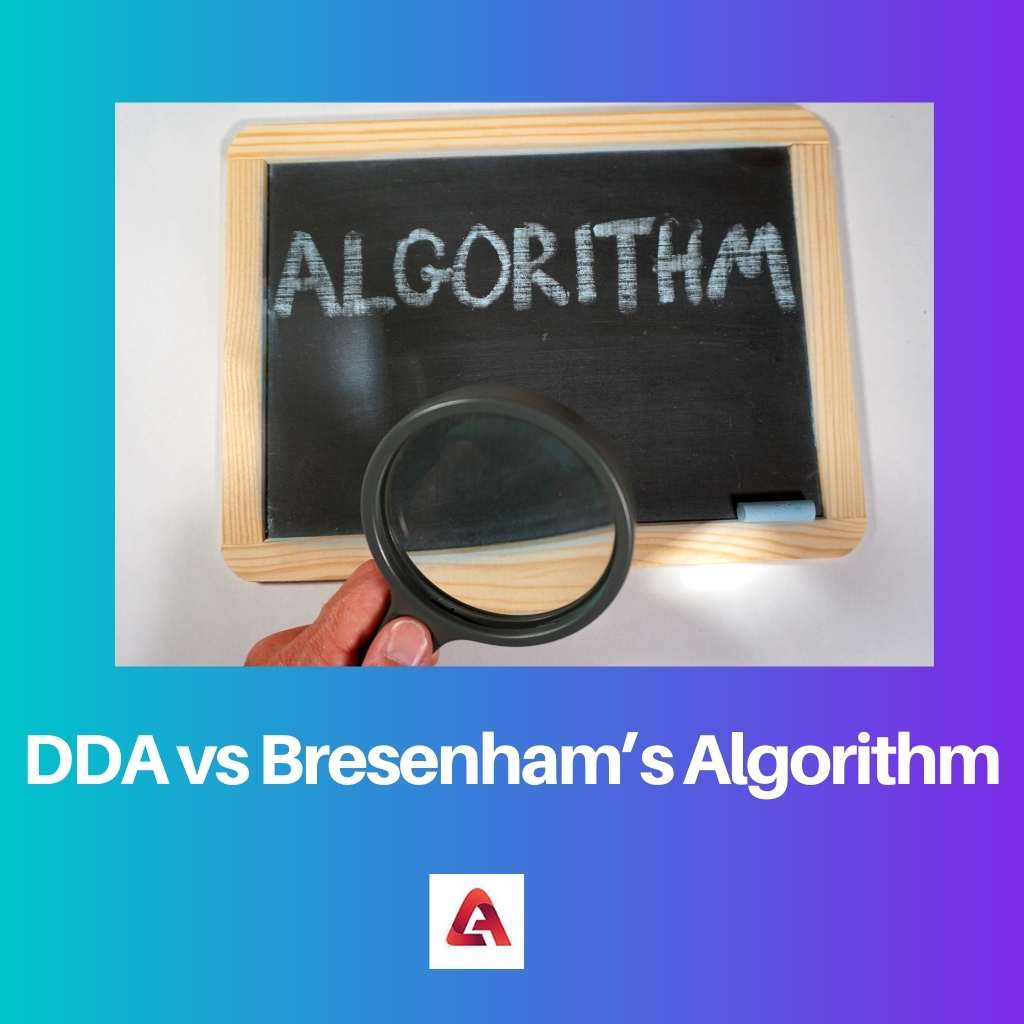The field of computer graphics is vast and constantly evolving. It involves various concepts and ideas that may seem complicated for beginners.
Amidst this, one of the most essential things to do in visual media is ‘drawing a line’. For this purpose, DDA and Bresenham’s algorithm are two algorithms that can be used to approximate a line segment.
Key Takeaways
- DDA Algorithm uses floating-point arithmetic for rasterization, while Bresenham’s Algorithm uses integer arithmetic, making it more efficient.
- Bresenham’s Algorithm generates more accurate line drawings than the DDA Algorithm.
- Bresenham’s Algorithm is faster and requires fewer computational resources than the DDA Algorithm.
DDA vs Bresenham’s Algorithm
DDA is a line drawing algorithm that increments a point’s x and y coordinates by small steps until it reaches the endpoint. Bresenham’s algorithm uses integer arithmetic to draw lines. It works by determining the closest pixel to the line path at each x coordinate and choosing the closest pixel.

‘DDA stands for digital differential analyzer’. It is essentially an algorithm that is used to estimate variables that exist between two points. ‘DDA stands for ‘digital differential analyzer’. It is essentially an algorithm that is used to evaluate variables that exist between two points.
Most people use it for converting vector lines, triangles, and polygons, into their raster counterparts. It is even possible for them to be extended to non-linear functions using DDA.
Meanwhile, Bresenham’s algorithm specifies the starting and ending points between a line that must be drawn in computer graphics. Most people use it in bitmap images to create line primitives.
The extension of this algorithm can even be used to draw circles. However, despite being one of the oldest algorithms designed, it is more efficient than others.
Comparison Table
| Parameters of Comparison | DDA | Bresenham’s Algorithm |
|---|---|---|
| Method | It only uses multiplication and division. | It only uses addition and subtraction. |
| Efficiency | It is not as efficient as the latter. | It is very efficient despite being one of the oldest. |
| Speed | It is not as fast as the latter. | It is one of the fastest algorithms for line drawing. |
| Precision | It is not very accurate or precise. | It is very accurate and precise. |
| Complexity | It uses complex calculations in its work. | It uses simple calculations in its work. |
| Optimization | It does not allow optimization. | It allows optimization. |
| Price | It is expensive. | It is on the cheaper end. |
What is DDA?
‘DDA is an acronym for digital differential analyzer’. It comes in software as well as hardware forms. ‘DDA is an acronym for ‘digital differential analyzer’. It comes in software as well as hardware forms.
Essentially, it is a tool that helps estimate variables between two points. Further, a line segment can be drawn through these variables.
Such an algorithm converts vector lines, triangles, and polygons into raster.
A noteworthy use of the DDA algorithm is that once it converts line segments into raster, it can even use them in non-linear functions.
This can be applied to texture mapping, traversing shapes from 3D to 2D, and even making quadratic curves.
The way DDA works is one of the oldest methods in computer graphics. Firstly, the algorithm estimates values for different points.
These points are defined by xi, which is calculated using the xi = xi-1 + 1 and yi = yi-1 + m. Further, the slope of the line segment is estimated and further calculated before drawing.
However, a limitation of this algorithm is that it is not as efficient as others. The DDA algorithm can become a little slow and less efficient when large data sets are in question.
Even though it uses complex calculations, it is not always accurate and precise. Moreover, it does not allow any form of optimization.
Despite this, it is pretty expensive as compared to other algorithms.
What is Bresenham’s Algorithm?
Bresenham’s algorithm is one of the earliest methods to approximate line segments in computer graphics. It is used to specify specific points through which a straight line can be drawn with approximation.
Most people use it in bitmap images to create simple geometric shapes.
Unlike DDA, which calculates multiplication and division, Bresenham’s algorithm uses only addition and subtraction. This means that it uses easy measures, saving time and proving more efficient.
Moreover, it is one of the most precise and accurate methods for computing values. It allows optimization and is also on the cheaper end of the spectrum.
The algorithm is extensively used in graphic chips and plotters. Due to this, it is the basis for many software visual libraries.
Many people use its extensions to draw shapes like circles and spheres. As the calculations are straightforward, it is even used in firmware for several graphic cards.
Regardless, numerous modifications have been made to the algorithm since its discovery, which was in 1962. Earlier, it could only be used to draw simple segments and shapes.
However, today, the algorithm can even be used to draw ellipses, Bezier curves, and cubes.
Main Differences Between DDA and Bresenham’s Algorithm
- DDA only uses multiplication and division, whereas Bresenham’s algorithm only uses addition and subtraction.
- DDA is not as efficient as the latter whereas Bresenham’s algorithm is very efficient despite being one of the oldest.
- DDA is not as fast as the latter whereas Bresenham’s algorithm is one of the fastest algorithms for line drawing.
- DDA is not very accurate or precise whereas Bresenham’s algorithm is very accurate and precise.
- DDA uses complex calculations in its working whereas Bresenham’s algorithm uses simple calculations.
- DDA does not allow optimization whereas Bresenham’s algorithm allows optimization.
- DDA is expensive whereas Bresenham’s algorithm is on the cheaper end.




